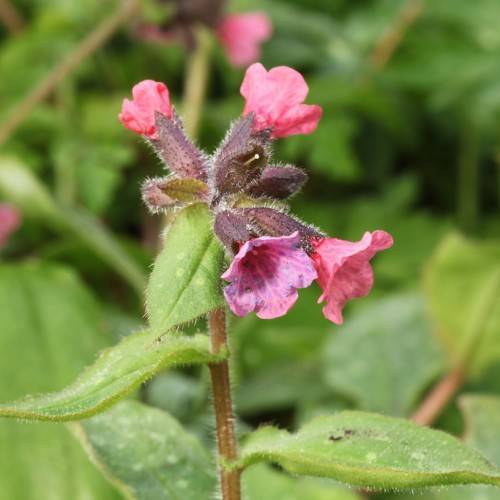
common lungwort
Pulmonaria officinalis
Cycle:
Herbaceous Perennial
Watering:
Average
Hardiness Zone:
3 - 8
Flowers:
Flowers
Sun:
Part shade,full shade
Leaf:
Yes
Growth Rate:
Low
Maintenance:
Low
watering
Common lungwort needs to be watered once a week. Depending on the temperature and time of year, you may need to adjust your watering schedule. In the summer, when temperatures are warmer, it should be watered more frequently. During cold winter months, it should be watered less. Make sure to water the plant deeply, until the water begins to drain from the bottom of the pot. It is important to allow the soil to become slightly dry before the next watering session. If the soil remains soggy for too long, the plant can become prone to root rot.
sunlight
Common lungwort (Pulmonaria officinalis) prefers a brighter location with partial to full shade and an average of 3-4 hours of direct sun per day. In areas with mild winters, this species will grow well given a few hours of direct sunlight each day; however, in areas with hotter summers, it is best to plant it where it can receive some afternoon shade. In colder climates, full sun is recommended to encourage better growth and flowering. In general, the best time for common lungwort to receive direct sunlight is in the morning, before the afternoon sun is too hot and intense.
pruning
Pruning Common Lungwort generally should take place in late winter or early spring. To prune your plant, begin by removing any dead or damaged leaves or stems, cutting back to the base of the plant. Then, look for any overly tall stems and prune them back to the desired height. It is best to leave some foliage and stems at the desired height to ensure the plant can draw energy to continue to grow. Additionally, when possible, try to leave some flower buds for spring. When pruning, always make sure to keep a few inches of the stem above the soil line to ensure new growth. Lastly, to keep the shape of your plant, lightly shape the foliage and stems as desired.
